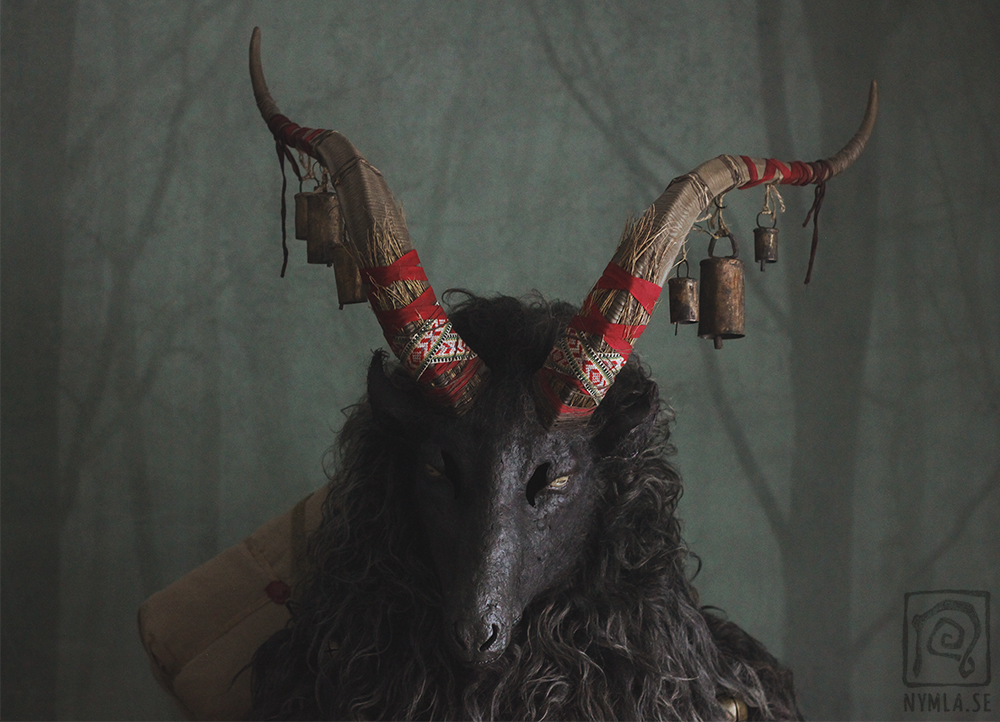Mrs. Griffin had worked as a mail carrier in Middleton for most of her adult life. She liked the regular hours and the fact that she wasn’t stuck in an office all day. She’d spent one summer clerking at the post office and she’d immediately applied to be reassigned. Out on the road, she was on her own. There were no bosses and no whiney customers. People were usually happy to see her. The only downside to the job was Christmas.
Every December, the job turned into a nightmare of long hours, heavy lifting, and rude patrons. Her first Christmas as a mail carrier had been tolerable. She might have even said it was invigorating, but as each year passed, the Christmas season became more of a burden than a joy.
It was a cold December day when she had to return to the station for her third load of packages in the gathering darkness. She called her family to let them know that she was going to be late for dinner…again. She sighed and turned up the heater in the little mail truck. At least the streets had been plowed.
That whole “neither sleet nor snow” thing was yet another big Christmas downer for Mrs. Griffin. Her customers liked to cite it as if it were the word of the mail gods. Fortunately, snow wasn’t an issue on this brisk night. It had snowed hard the night before, so the day had that quiet feeling of being wrapped in blankets. It was nice until Mrs. Griffin had to get out and trudge through the stuff that people hadn’t shoveled off their walks.
The evening went fairly smoothly and Mrs. Griffin surprised even herself by humming a few Christmas tunes. She was particularly fond of Smokey Robinson’s Christmas Everyday even though she didn’t wish for any such thing.
She pulled over and opened the back of the truck. There was only one package left and it was a small one. Great! She was ready to eat dinner and try and forget about the route for a few hours.
Mrs. Griffin picked up the box and found it to be surprisingly heavy despite the fact that it was only as large as a couple of paperback books. She’d long since passed the point where she wondered about what the boxes she delivered contained. She just eyed the label. 4653. The Millers.
She closed the door to salvage what little heat was left inside her truck and she marched toward the Miller place. The house was dark, so she approached the mailbox. It was one of the old, loaf-shaped boxes on a post. It would be plenty big enough to hold the little box.
Mrs. Griffin grabbed the metal handle and pulled. The door opened with a creak and she plopped the package inside. She was about to close the door when a voice inside the mailbox said, “Wait, Robin Griffin, wait.”
“Oh, no. Uh-uh,” said Mrs. Griffin. “I ain’t got time for no pranks.” She leaned into the mailbox and spoke loudly. “Can you hear me? Who is this? Frank, did Lonnie put you up to this? He ain’t funny and neither are you.”
She slammed the mailbox shut and strode back to her truck. Of all the nerve! She was pulling away when she reconsidered. What if the Millers opened that package and complained? It was one thing to prank a mail carrier, but there were strict rules about dealing with customers. Besides, that mailbox was technically government property. There were even fines for its misuse.
Mrs. Griffin sighed. That Lonnie was going to pay for this. She turned her truck around and returned to the Miller house. She stomped over to the mailbox and opened it but there was no package inside. Huh? Mrs. Griffin reached inside but the mailbox was empty.
She looked down at the snow covered ground. Maybe she’d accidentally knocked the package out of the mailbox when she slammed the door. She wasn’t sure how that could even happen, but the little box had to be somewhere. She even looked a second and third time to convince herself. After thoroughly canvassing the area, she gave up. Maybe some package thief had seen her drop it off and had rushed in to grab it. If so, they were going to get quite a surprise.
Mrs. Griffin chuckled as she opened the door to her mail truck, but she froze when she saw the package addressed to the Millers sitting right in the middle of the driver’s seat. She looked up and down the street but it was a silent night. There wasn’t even any traffic. What was going on?
Snow began to fall as Mrs. Griffin stood beside her truck and stared at the box. There was no way that anyone had placed it there without her seeing them. No way. At the very least, she would have heard them opening and closing the mail truck door. It slid along a track that squealed like a multitude of the heavenly host whenever it was opened or closed.
The snow picked up as Mrs. Griffin struggled to understand her situation. It was just a box, right? Just a prank? Then why was she so freaked out right now?
She went around to the back of the truck and opened the gate. She grabbed one of the beat up, white, mail containers and walked back to the driver’s side of the vehicle. She turned the basket upside down and put it over the package, then she pulled it toward her. There was a thump and then…nothing. Mrs. Griffin looked at the container in her hand and then back at the driver’s seat. The package wasn’t on the ground, so it must have fallen off the edge of the seat and slid underneath. Holy crap, how was she ever going to explain all of this when she got home?
Mrs. Griffin stooped low and tried to look underneath the seat but it was too dark, even with the dome light on in the mail truck. She was going to have to reach in and feel around for the package.
She stood up and pulled one of her gloves out of her coat pocket. After slipping it on, she got on her knees in the snow and reached into the dark space under the seat. She felt around for the troublesome package but all she found was a hard gummy bear covered in grit. Ugh. The package was gone.
With a frustrated sigh, Mrs. Griffin struggled back to her feet and looked around the snow-covered area one last time. She glanced at her watch. Her kids were going to watch the Grinch tonight just like she’d done as a child. She smiled to herself and stood in the crisp, new snow admiring the silence.
That silence was broken by a tremendous flash of light that was followed by a long, rumbling roar. It came from just up ahead, so Mrs. Griffin jumped in her truck and took off. The missing package was all but forgotten.
About a half mile away, she pulled up to see that a massive fire had engulfed a warehouse. Mrs. Griffin could feel the heat from inside her mail truck. Several cars on the street outside were already burned beyond recognition and one had apparently exploded. She could hear the sirens in the distance so she knew someone had already called 911. The local businesses were empty so there really wasn’t anyone to rescue. The fire department would handle putting out the blaze.
Mrs. Griffin looked at the torched cars and breathed a sigh of relief. It would have sucked to have been driving by there just as that huge explosion happened. She was happy she’d missed it, but that didn’t stop her from pulling out her phone and snapping a couple of pics. Jim and the kids would have certainly heard the commotion and would want to know what happened.
The fire trucks pulled past the little mail truck and one of the firemen jumped out and motioned for her to get clear as he placed cones in the road. She waved her thanks, turned her truck around, and took the long way home.









